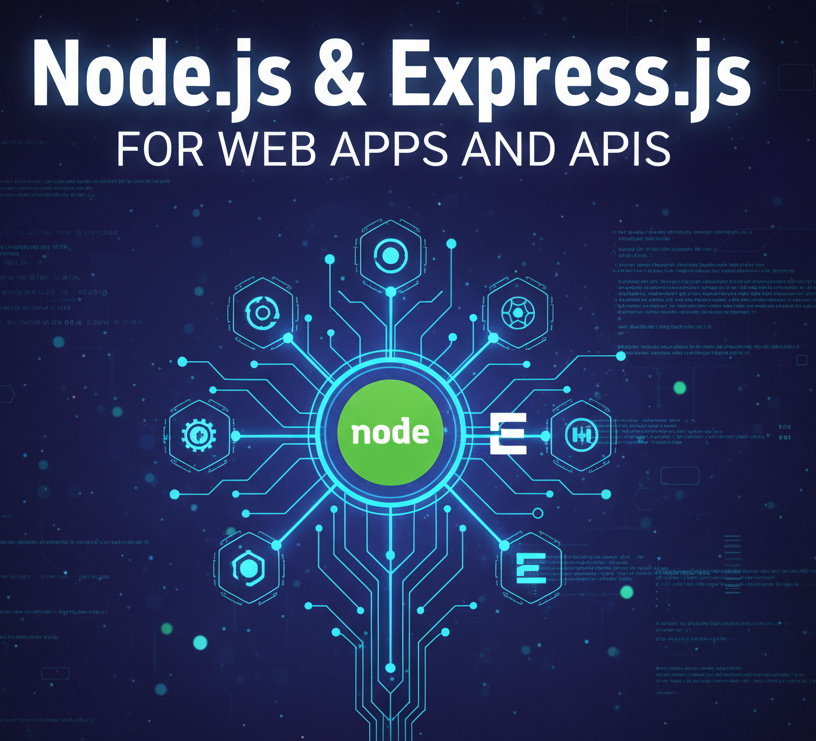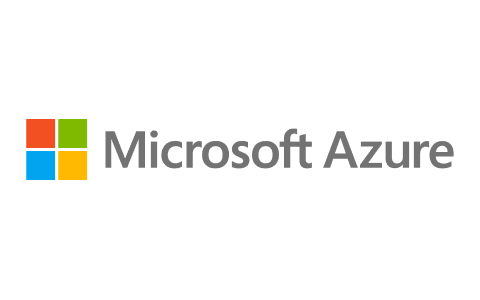- Great Learning
- Free Courses
- Cloud Computing
Earn a certificate & get recognized
Cloud Computing Foundations
Take the first step to boost your Cloud Computing career by enrolling in the free Cloud Computing course. The course will familiarize you with various fundamental concepts and give you insights into cloud benefits.
Instructor:
Mr. Nirmallya MukherjeeCloud Computing Foundations
13.2K+ learners enrolled so far
Stand out with an industry-recognized certificate
10,000+ certificates claimed, get yours today!
Get noticed by top recruiters
Share on professional channels
Globally recognised
Land your dream job

Skills you will gain
Cloud Foundations
Cloud Computing Benefits
Key Highlights
Get free course content
Master in-demand skills & tools
Test your skills with quizzes
About this course
This free Cloud Computing course is designed to help you gain insights into the essential equipment in the IT Landscape. This free course introduces you to the basic concepts of cloud computing. You understand the foundation concepts underlying the cloud, followed by how the cloud helps resolve some of the business concerns. Complete the Cloud Computing Foundations course and earn free access to the certificate.
Build a promising career in the domain with our Cloud Computing Courses. Enroll today to study Cloud Computing from the world-class faculty.
Course outline
Introduction to Cloud Computing
This module starts with helping you understand what Cloud Computing is and go through various cloud models like public, private, and hybrid clouds.
Business concerns and how Cloud helps
This section discusses various organizational tasks and how the cloud is employed in covering most of them securely and efficiently.
Why Cloud Computing Foundations?
This section discusses why the cloud must be employed in every organization while mentioning the technology's merits.
Get access to the complete curriculum once you enroll in the course
Stand out with an industry-recognized certificate
10,000+ certificates claimed, get yours today!
Get noticed by top recruiters
Share on professional channels
Globally recognised
Land your dream job

Cloud Computing Foundations

1.5 Hours
Beginner
13.2K+ learners enrolled so far
Get free course content
Master in-demand skills & tools
Test your skills with quizzes
Refer and earn
Get learning discounts up to $20
Learner reviews of the Free Courses
5.0

5.0

5.0

5.0

5.0

5.0

5.0
5.0
5.0

5.0
Our course instructor

Mr. Nirmallya Mukherjee
Program Director & Faculty - PGPCC, Great Learning
Cloud Computing Expert
Frequently Asked Questions
Will I receive a certificate upon completing this free course?
Is this course free?
What are the prerequisites to learning this Cloud Foundations course?
This is a beginner-level course, and you need not have any prerequisites before learning from it.
How long does it take to complete this free Cloud Computing Foundations course?
Introduction to AI is an hour-long course. You can, however, learn from the course at your convenience since it is self-paced.
Will I have lifetime access to this Cloud Foundations course?
Yes. You will have lifetime access to this free online course once you enroll in it.
What are my next learning options after this Cloud Computing Foundations course?
After you have completed this course, you can register for the Cloud Computing Training and master all cloud concepts under one roof.
What is Cloud Computing used for?
Cloud Computing refers to delivering hosted services over the internet. It's a model used to provide on-demand network access to a shared pool of computing resources, for example, networks, servers, storage, applications, and services available everywhere.
Why is Cloud Computing so popular?
- One of the primary reasons is cost savings, where businesses only have to pay for the resources they use.
- Another reason is its flexibility and scalability. Businesses can quickly scale up or down their use of resources as needed, saving them a lot of time and money.
- Cloud Computing can also provide businesses with better security, disaster recovery, and data backup.
Is it worth learning Cloud Foundations?
Yes, Cloud Computing is worth learning. Several companies are moving to the Cloud to save money on IT infrastructure costs in today's business world. It also helps with professional flexibility, scalability, and more. Consequently, there is a growing demand for Cloud Computing skills.
Cloud Computing is a relatively new technology, and it is still much undiscovered. However, it is a potent field, and the demand will only escalate in the near future.
What jobs demand that you learn Cloud Computing?
It is essential for every professional and aspirant in the cloud computing sector to have high knowledge of its concepts and competency in working with the technology. The prevalent careers for the subject include:
- Cloud Architect
- Cloud Engineer
- Cloud Systems Administrator
- Cloud Network Engineer
- Cloud Security Engineer
- Cloud Solutions Architect
- Cloud DevOps Engineer
After completing this free Cloud Computing course, will I get a certificate?
Yes. The course constitutes different modules for different topics. Gain a thorough understanding of these concepts to earn a free Cloud Foundations certificate.
What knowledge and skills will I gain upon completing this Cloud Computing Foundations course?
You will gain expertise in working with different underlying techniques used in Cloud Computing. You will also thoroughly appreciate the benefits of employing Cloud Computing in your everyday tasks personally and in the organization.
How much does this Cloud Foundations course cost?
Cloud Foundations is a free course. You can enroll in the course and start learning it online.
Is there a limit on how many times I can take this Cloud Foundations course?
No, you can register for this course today and come back at your leisure to learn it for free online.
Can I sign up for multiple courses from Great Learning Academy at the same time?
Yes. You can enroll in multiple courses simultaneously.
Why choose Great Learning Academy to learn Cloud Computing Foundations?
Data science, machine learning, artificial intelligence, product management, digital marketing, and big data engineering are among the subjects covered in the full-time and short-term programs offered by Great Learning, a top provider of ed-tech services. Some justifications for choosing Great Learning include the following:
- One of the few businesses, Great Learning, provides full-time, online, and offline training across various fields.
- You can get support for your learning journey from the experienced mentors on the Great Learning team who are specialists in their industry.
- The programs offered by Great Learning are created with consideration for the demands of the industry and are frequently updated to reflect the most recent developments.
Who is eligible to take this Cloud Computing Foundations course?
Anybody with interest in learning Cloud Computing basics can enroll in this free online course.
What are the steps to enroll in the Cloud Foundations course?
To learn Cloud Computing Foundations and knowledge to work on various platforms, you need to:
- Go to the course page
- Click on the "Enroll for Free" button
- Start learning the Cloud Computing Foundations course for free online.
Become a Skilled Professional with Pro Courses
Gain work-ready skills with guided projects, top faculty and AI tools, all at an affordable price.


View Course

Included with Pro+ Subscription

View Course

Included with Pro+ Subscription
.jpg)
View Course

Included with Pro+ Subscription


View Course

Included with Pro+ Subscription


View Course

Included with Pro+ Subscription

View Course

Included with Pro+ Subscription

View Course

Included with Pro+ Subscription

View Course

Included with Pro+ Subscription


View Course

Included with Pro+ Subscription




View Course

Included with Pro+ Subscription


View Course

Included with Pro+ Subscription


View Course

Included with Pro+ Subscription


View Course

Included with Pro+ Subscription
.png)


View Course

Included with Pro+ Subscription


View Course

Included with Pro+ Subscription


View Course

Included with Pro+ Subscription


View Course

Included with Pro+ Subscription


View Course

Included with Pro+ Subscription
.png)

View Course

Included with Pro+ Subscription
.jpg)



View Course

Included with Pro+ Subscription

View Course

Included with Pro+ Subscription
.png)
View Course

Included with Pro+ Subscription
.png)
View Course

Included with Pro+ Subscription
.png)
View Course

Included with Pro+ Subscription

View Course

Included with Pro+ Subscription

View Course

Included with Pro+ Subscription

View Course

Included with Pro+ Subscription

View Course

Included with Pro+ Subscription

View Course

Included with Pro+ Subscription
.png)
View Course

Included with Pro+ Subscription
.jpg)
View Course

Included with Pro+ Subscription

View Course

Included with Pro+ Subscription


View Course

Included with Pro+ Subscription




View Course

Included with Pro+ Subscription

View Course

Included with Pro+ Subscription

View Course

Included with Pro+ Subscription
.jpg)
View Course

Included with Pro+ Subscription

View Course

Included with Pro+ Subscription

View Course

Included with Pro+ Subscription
.png)
View Course

Included with Pro+ Subscription

View Course

Included with Pro+ Subscription

View Course

Included with Pro+ Subscription

View Course

Included with Pro+ Subscription

View Course

Included with Pro+ Subscription
.jpg)
View Course

Included with Pro+ Subscription
.jpg)
View Course

Included with Pro+ Subscription
.jpeg)
View Course

Included with Pro+ Subscription
.jpg)
View Course

Included with Pro+ Subscription

View Course

Included with Pro+ Subscription

View Course

Included with Pro+ Subscription

View Course

Included with Pro+ Subscription


View Course

Included with Pro+ Subscription
.png)
View Course

Included with Pro+ Subscription

View Course

Included with Pro+ Subscription
Popular


View Course

Included with Pro+ Subscription

View Course

Included with Pro+ Subscription
.jpg)
View Course

Included with Pro+ Subscription


View Course

Included with Pro+ Subscription


View Course

Included with Pro+ Subscription

View Course

Included with Pro+ Subscription

View Course

Included with Pro+ Subscription

View Course

Included with Pro+ Subscription
Microsoft Courses


View Course

Included with Pro+ Subscription




View Course

Included with Pro+ Subscription


View Course

Included with Pro+ Subscription


View Course

Included with Pro+ Subscription


View Course

Included with Pro+ Subscription
Cloud Computing
.png)


View Course

Included with Pro+ Subscription


View Course

Included with Pro+ Subscription


View Course

Included with Pro+ Subscription


View Course

Included with Pro+ Subscription


View Course

Included with Pro+ Subscription
.png)

View Course

Included with Pro+ Subscription
.jpg)




.jpg)

.png)
View Course

Included with Pro+ Subscription


.png)

View Course

Included with Pro+ Subscription
Cyber Security

View Course

Included with Pro+ Subscription

View Course

Included with Pro+ Subscription
.png)
View Course

Included with Pro+ Subscription
.png)
View Course

Included with Pro+ Subscription
.png)
View Course

Included with Pro+ Subscription
IT & Software

View Course

Included with Pro+ Subscription

View Course

Included with Pro+ Subscription

View Course

Included with Pro+ Subscription

View Course

Included with Pro+ Subscription

View Course

Included with Pro+ Subscription
.png)
View Course

Included with Pro+ Subscription
.jpg)
View Course

Included with Pro+ Subscription

View Course

Included with Pro+ Subscription


View Course

Included with Pro+ Subscription
 (1).png)
View Course

Included with Pro+ Subscription


View Course

Included with Pro+ Subscription

View Course

Included with Pro+ Subscription


View Course

Included with Pro+ Subscription

View Course

Included with Pro+ Subscription

View Course

Included with Pro+ Subscription
.png)
View Course

Included with Pro+ Subscription
.png)
View Course

Included with Pro+ Subscription

View Course

Included with Pro+ Subscription

View Course

Included with Pro+ Subscription

View Course

Included with Pro+ Subscription

View Course

Included with Pro+ Subscription

View Course

Included with Pro+ Subscription
AI & Generative AI




View Course

Included with Pro+ Subscription

View Course

Included with Pro+ Subscription

View Course

Included with Pro+ Subscription
.jpg)
View Course

Included with Pro+ Subscription

View Course

Included with Pro+ Subscription

View Course

Included with Pro+ Subscription
Management
.png)
View Course

Included with Pro+ Subscription

View Course

Included with Pro+ Subscription

View Course

Included with Pro+ Subscription

View Course

Included with Pro+ Subscription

View Course

Included with Pro+ Subscription
.jpg)
View Course

Included with Pro+ Subscription
.jpg)
View Course

Included with Pro+ Subscription
.jpeg)
View Course

Included with Pro+ Subscription
.jpg)
View Course

Included with Pro+ Subscription
.png)
View Course

Included with Pro+ Subscription
.png)
View Course

Included with Pro+ Subscription
.png)
View Course

Included with Pro+ Subscription
 (1).jpg)
View Course

Included with Pro+ Subscription

View Course

Included with Pro+ Subscription
.png)
View Course

Included with Pro+ Subscription
.png)
View Course

Included with Pro+ Subscription
Data Science & ML

View Course

Included with Pro+ Subscription

View Course

Included with Pro+ Subscription

View Course

Included with Pro+ Subscription


View Course

Included with Pro+ Subscription
.png)
View Course

Included with Pro+ Subscription

View Course

Included with Pro+ Subscription
Subscribe to Academy Pro+ & get exclusive features
$25/month
No credit card required

Learn from 40+ Pro courses

Access 500+ certificates for free

700+ Practice exercises & guided projects

Prep with AI mock interviews & resume builder
Recommended Free Cloud Computing courses





Similar courses you might like





.jpg)
Related Cloud Computing Courses
-
Personalized Recommendations
Placement assistance
Personalized mentorship
Detailed curriculum
Learn from world-class faculties
50% Average salary hike -


McCombs School of Business at The University of Texas at Austin
PG Program in Cloud Computing: Leveraging GenAI6 months · Online · Weekend
360° Cloud LearningKnow More
-


Microsoft Azure
AZ-104 - Microsoft Azure Administrator Training Course6 Weeks · Online
Know More
-


Great Lakes Institute of Management
Post Graduate Program in Cloud Computing8 months · Online
360° Cloud LearningKnow More












